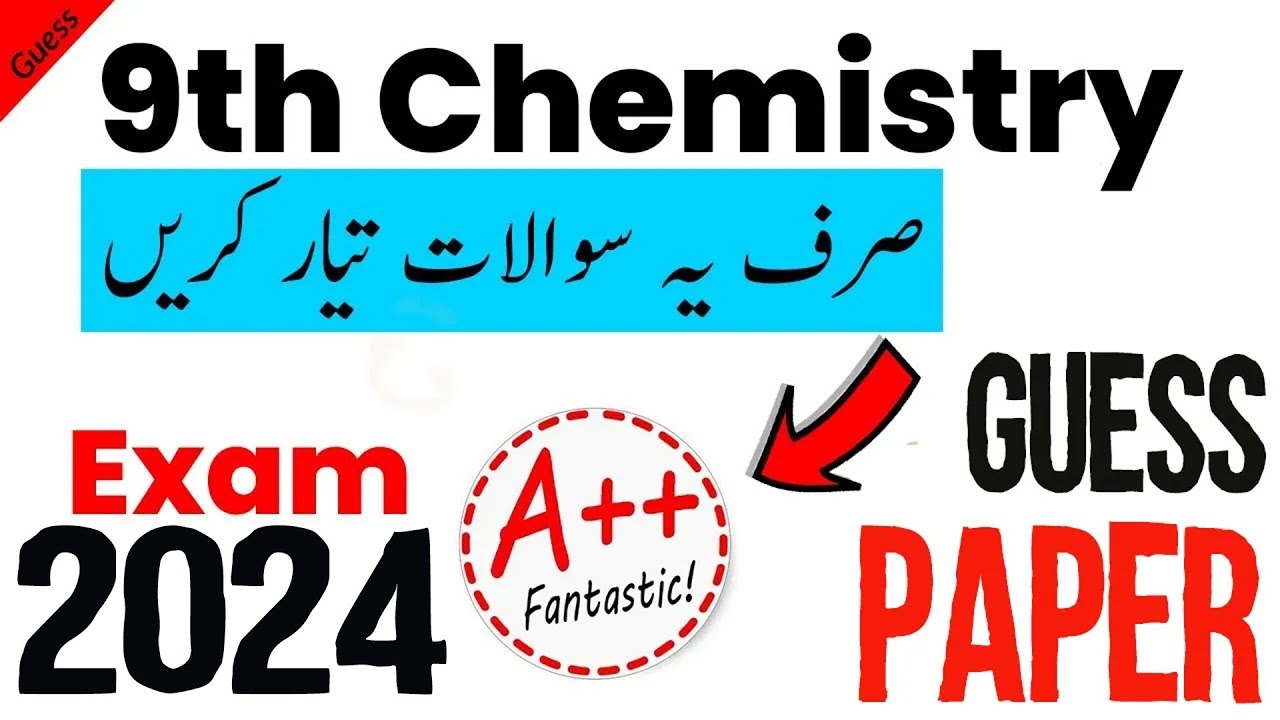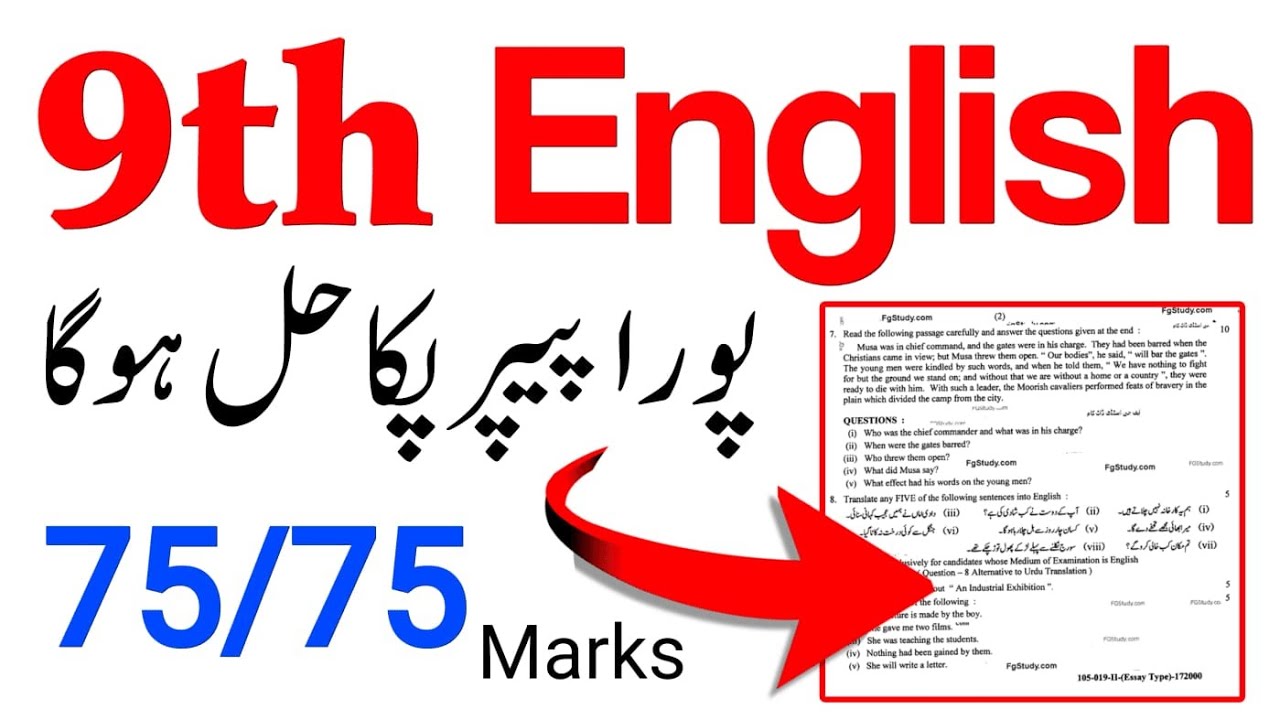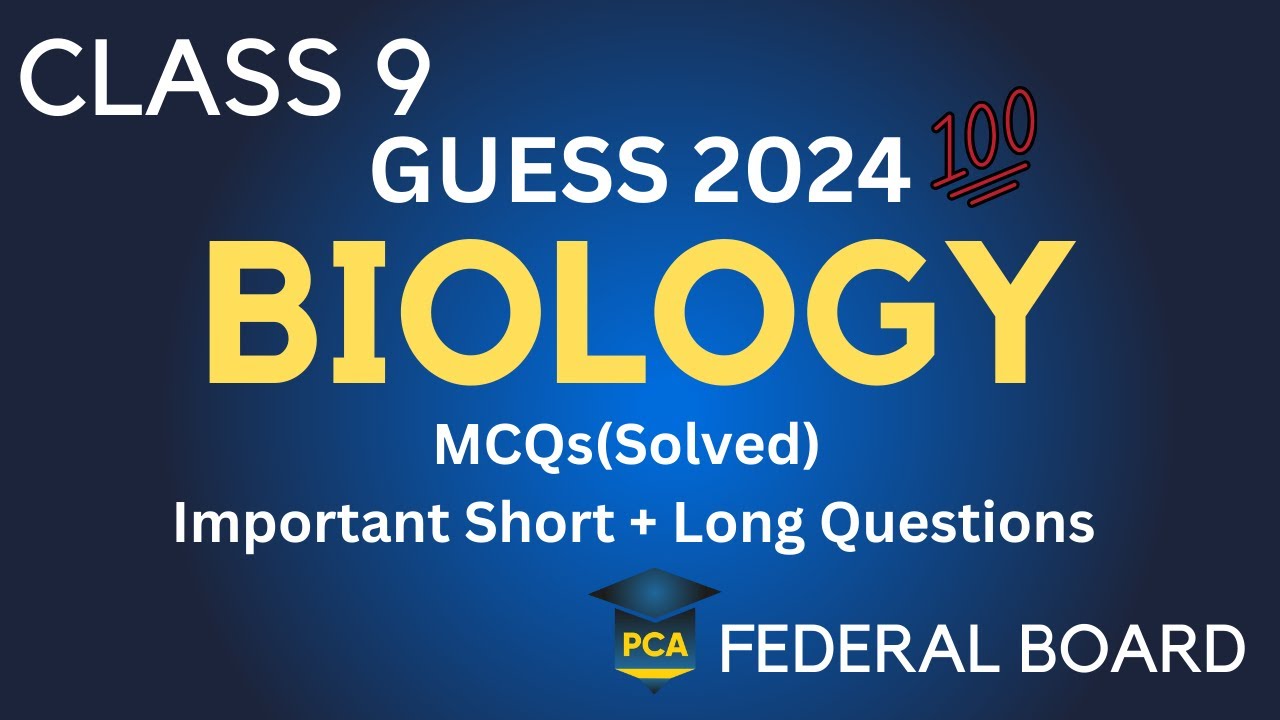Master your Punjab Board Class 9 Chemistry exam in 2024 with these important questions on atomic structure, bonding, reactions, and more. Boost your preparation for top results!”
Chemistry Class 9 Important Questions 2024 for Punjab Board – A Quick Overview
To excel in Chemistry for Class 9 under the Punjab Board, students should focus on key topics like atomic structure, chemical bonding, acids, and chemical reactions. The 2024 syllabus emphasizes questions related to concepts and practical applications, ensuring a solid foundation for future studies. Below, we outline important questions based on the exam pattern and essential topics to help you prepare effectively.
Key Topics for Chemistry Class 9 (Punjab Board 2024)
- Atomic Structure and Theory
- Q: Explain the basic structure of an atom.
Answer: Atoms consist of three main subatomic particles: protons, neutrons, and electrons. Protons and neutrons form the nucleus, while electrons revolve around the nucleus in shells. - Q: What is the significance of atomic number and mass number?
Answer: The atomic number is the number of protons in the nucleus, determining the element’s identity, while the mass number is the sum of protons and neutrons, representing the atomic mass.
- Q: Explain the basic structure of an atom.
- Chemical Bonding
- Q: Differentiate between ionic and covalent bonding.
Answer: Ionic bonding occurs when electrons are transferred from one atom to another, leading to the formation of ions. Covalent bonding occurs when atoms share electrons to achieve stability. - Q: Give examples of molecules formed by covalent bonds.
Answer: Water (H₂O), carbon dioxide (CO₂), and methane (CH₄) are common examples of covalently bonded molecules.
- Q: Differentiate between ionic and covalent bonding.
Chemical Reactions and Equations
- Q: Write a balanced chemical equation for the reaction between sodium and water.
Answer:
2Na+2H2O→2NaOH+H22Na + 2H_2O \rightarrow 2NaOH + H_22Na+2H2O→2NaOH+H2- This reaction shows sodium reacting with water to form sodium hydroxide and hydrogen gas.
- Q: Define the Law of Conservation of Mass with an example.
Answer: The Law of Conservation of Mass states that matter cannot be created or destroyed in a chemical reaction. For example, in the reaction between hydrogen and oxygen to form water, the total mass of the reactants equals the total mass of the products:
2H2+O2→2H2O2H_2 + O_2 \rightarrow 2H_2O2H2+O2→2H2O - Q: What is a decomposition reaction? Give an example.
Answer: A decomposition reaction is one in which a single compound breaks down into two or more simpler substances.
Example:
2H2O2→2H2O+O22H_2O_2 \rightarrow 2H_2O + O_22H2O2→2H2O+O2
Here, hydrogen peroxide decomposes into water and oxygen.
Acids, Bases, and Salts
- Q: What is the pH scale, and how is it used to measure acidity?
Answer: The pH scale measures how acidic or basic a substance is, ranging from 0 to 14. Substances with pH less than 7 are acidic, pH 7 is neutral, and pH greater than 7 indicates basicity.
Example: Lemon juice (pH ~2) is acidic, and soap solution (pH ~9) is basic. - Q: How is common salt (NaCl) formed in a neutralization reaction?
Answer: Common salt is formed when an acid reacts with a base. For example, hydrochloric acid reacts with sodium hydroxide:
HCl+NaOH→NaCl+H2OHCl + NaOH \rightarrow NaCl + H_2OHCl+NaOH→NaCl+H2O
This reaction produces sodium chloride (salt) and water.
Important Numerical Problems
- Mole Concept and Molar Mass
- Q: Calculate the number of moles in 44 grams of CO₂.
Answer: The molar mass of CO₂ is 44 g/mol. Thus,
Moles=Given massMolar mass=44g44g/mol=1 mole\text{Moles} = \frac{\text{Given mass}}{\text{Molar mass}} = \frac{44g}{44g/mol} = 1 \text{ mole}Moles=Molar massGiven mass=44g/mol44g=1 mole
- Q: Calculate the number of moles in 44 grams of CO₂.
- Empirical and Molecular Formula
- Q: What is the empirical formula of a compound containing 40% sulfur and 60% oxygen?
Answer:
Step 1: Convert percentages into grams (assuming 100g of the compound):- Sulfur: 40g
- Oxygen: 60g
Step 2: Divide by the molar masses (Sulfur = 32 g/mol, Oxygen = 16 g/mol): - Sulfur: 4032=1.25\frac{40}{32} = 1.253240=1.25
- Oxygen: 6016=3.75\frac{60}{16} = 3.751660=3.75
Step 3: Divide by the smallest number to get the ratio: - Sulfur: 1.251.25=1\frac{1.25}{1.25} = 11.251.25=1
- Oxygen: 3.751.25=3\frac{3.75}{1.25} = 31.253.75=3
The empirical formula is SO₃.
- Q: What is the empirical formula of a compound containing 40% sulfur and 60% oxygen?
Study Tips for Chemistry Class 9 (Punjab Board)
- Focus on Diagrams and Equations: Make sure to practice drawing atomic structures and balancing chemical equations as they frequently appear in exams.
- Revise Important Definitions: Be clear about fundamental concepts like ionic bonds, covalent bonds, acids, bases, and chemical reactions.
- Solve Past Papers: Regularly attempt past papers to familiarize yourself with the exam pattern and frequently asked questions.
- Use the Textbook: Stick closely to the Punjab Board textbook, especially focusing on chapters like “Structure of Atoms” and “Chemical Reactions” as they contain most of the exam’s important content.
By strategically focusing on these critical areas, you can efficiently prepare for the 2024 Chemistry exams. For more detailed guidance, students can refer to official past papers or seek help from resources like Punjab Board’s syllabus and external study platforms




